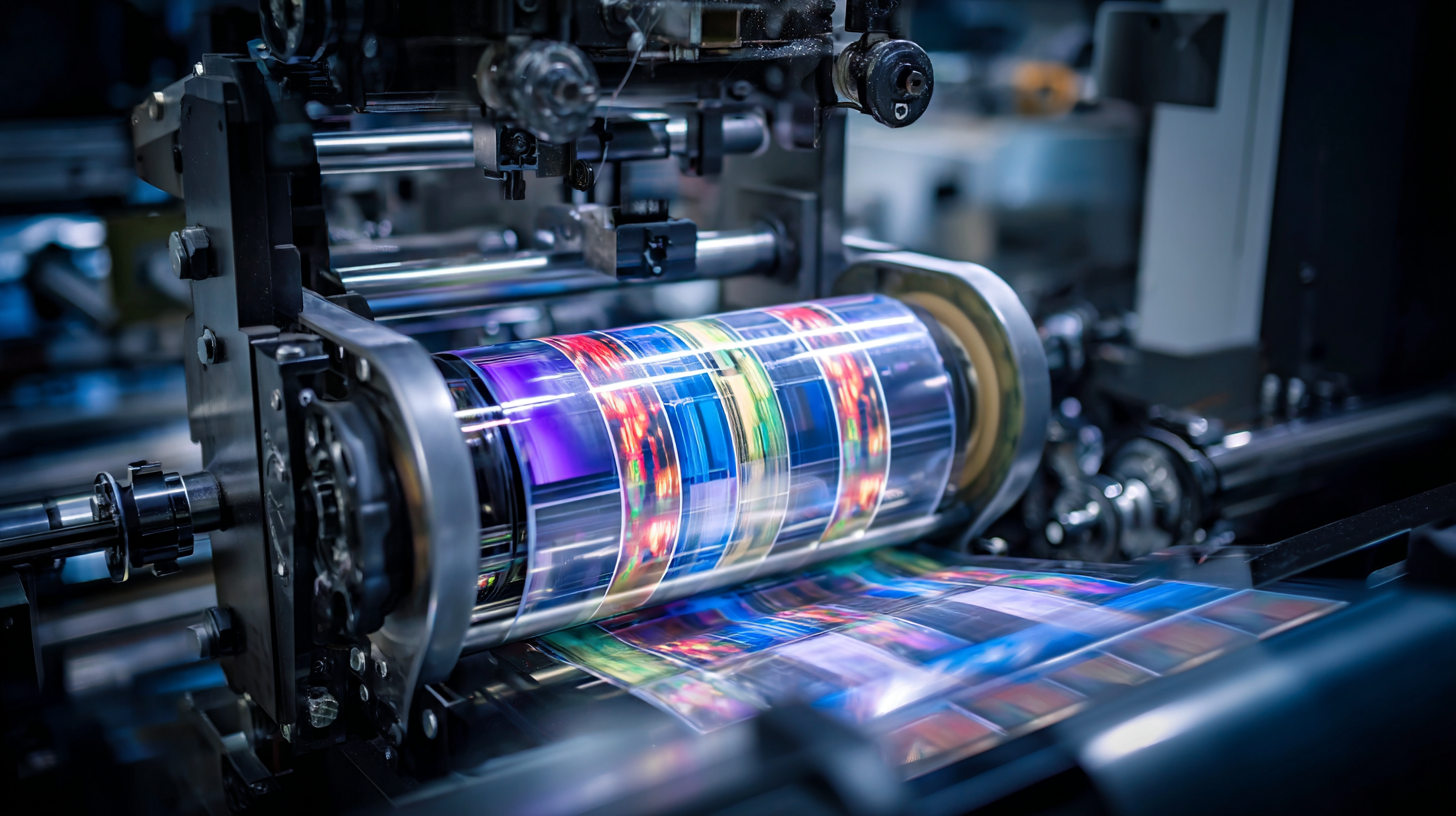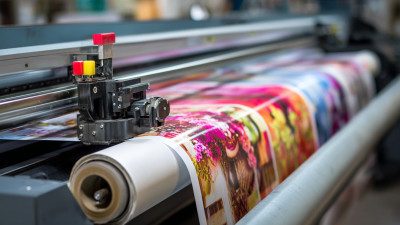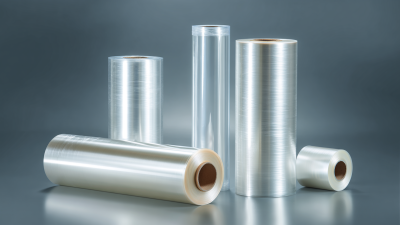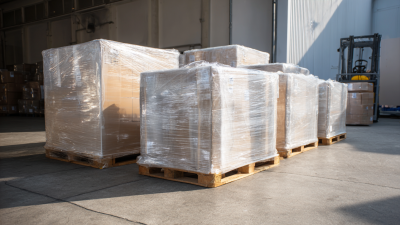In recent years, the packaging industry has experienced transformative changes driven by the advent of innovative technologies, particularly in the realm of Printing Film. According to a report by Smithers Pira, the global flexible packaging market is projected to reach $250 billion by 2025, with Printing Film playing a pivotal role in this growth due to its versatility and sustainability features.

The use of advanced printing techniques, such as gravure and digital printing, enhances not only the aesthetic appeal of packaging but also its functional attributes, including barrier performance and recyclability. As consumer preferences shift towards environmentally friendly solutions, innovations in Printing Film are enabling manufacturers to meet these demands while improving supply chain efficiencies.
This article explores the key developments in Printing Film technology and their implications for the future of packaging, highlighting how these innovations are reshaping the industry landscape with a focus on sustainability and consumer engagement.
The evolution of printing films in packaging reflects a blend of technological advancement and innovative materials that cater to the industry's dynamic needs. Historically, packaging relied heavily on traditional materials, but recent developments have introduced high-performance films that enhance durability, flexibility, and aesthetic appeal. These innovative films not only improve shelf-life and protection against environmental factors but also enable brands to create eye-catching designs that resonate with consumers.
Among the notable advancements are biodegradable and recyclable printing films, which are gaining traction as sustainability remains a crucial concern for both manufacturers and consumers. These eco-friendly materials reduce environmental impact without compromising on quality. Additionally, developments in barrier technology have led to films that offer superior moisture and oxygen resistance, essential for preserving the freshness of perishable goods. As companies continue to prioritize sustainability and functionality, the future of printing films in packaging promises further enhancements that will reshape industry standards and consumer experience.
As the packaging industry navigates the complexities of sustainability, eco-friendly printing films are emerging as a pivotal innovation. According to a report by Smithers Pira, the global demand for sustainable packaging materials is projected to grow by 7.5% annually, reflecting consumers' increasing preference for environmentally responsible products. This shift is propelling manufacturers to adopt printing films made from biodegradable and recyclable materials, thus significantly reducing their carbon footprint while enhancing the circular economy.
Implementing eco-friendly printing films not only addresses environmental concerns but also meets regulatory requirements that are becoming stringent worldwide. A key study by the Flexible Packaging Association highlighted that 59% of consumers are willing to pay more for sustainable packaging solutions. This trend is motivating brands to explore advanced materials like compostable films derived from plant-based sources, which are making notable inroads into mainstream markets.
**Tips:**
1. When choosing eco-friendly printing films, consider certifications such as FSC and BPA-free to ensure genuine sustainability.
2. Look for suppliers who provide comprehensive transparency about their production processes and environmental impacts.
3. Engage in consumer education initiatives to highlight the benefits of eco-friendly packaging, boosting brand loyalty and enhancing corporate reputation.
| Category | Innovation | Sustainability Aspect | Impact on Industry |
|---|---|---|---|
| Flexible Packaging | Biodegradable Films | Compostable materials that break down naturally | Reduces landfill waste |
| Printing Technology | Water-Based Inks | Lower VOC emissions | Improves air quality during production |
| Material Development | Recycled PET Films | Utilizes post-consumer waste | Conserves resources and reduces plastic usage |
| Finishing Techniques | Solar Energy Printing | Reduces carbon footprint | Promotes renewable energy use in manufacturing |
| Design Innovations | Minimalist Packaging | Reduced material consumption | Lowers production costs and waste |
Digital printing has emerged as a transformative force in the packaging industry, enabling companies to create customized and eye-catching designs with unprecedented efficiency. By eliminating the need for traditional printing plates, digital printing not only reduces production time but also lowers costs for small to medium-sized runs. This flexibility allows brands to experiment with various packaging designs, catering to changing consumer preferences and trends without the financial burden associated with conventional methods.

Furthermore, advancements in digital printing technology have significantly enhanced the quality and sustainability of packaging materials. High-resolution printing techniques can now produce vibrant colors and intricate patterns, making products stand out on crowded shelves. Additionally, the integration of eco-friendly inks and substrates into digital printing processes aligns with the industry's shift towards sustainable practices. As consumers increasingly seek out environmentally responsible products, digital printing serves as a key component in developing sustainable packaging solutions that appeal to this conscientious market segment.
Innovative print designs are revolutionizing the packaging industry, creating opportunities for brands to engage consumers on a deeper level. By utilizing advanced printing technologies, companies are able to produce eye-catching visuals and tactile experiences that stand out on shelves. This enhanced sensory appeal not only attracts consumers but also encourages them to connect with the brand's story, fostering loyalty and long-term relationships.
Moreover, the integration of personalized elements in packaging design allows brands to resonate with specific target audiences. Customizable features, such as variable data printing, enable brands to create unique packaging for different demographics or even individual customers. This level of personalization not only enhances the overall consumer experience but also transforms packaging from a mere functional container into an interactive touchpoint that communicates brand identity and values effectively. Through these innovative approaches, brands are not just packaging products; they are crafting memorable experiences that keep consumers coming back for more.

The cosmetics packaging market is undergoing significant evolution, shaped by various trends that dictate its growth. A notable surge in demand for sustainable packaging is evident, with over 70% of cosmetic brands aligning their strategies with eco-friendly solutions to meet consumer preferences. While plastic remains a predominant material, a shift towards innovative alternatives is on the horizon. Accelerated material innovation, spurred by developments in biodegradable plastics and nano-structured materials, promises to redefine not only the products we produce but also the way we live.
Tips: When considering packaging materials, brands should evaluate options that not only reduce environmental impact but also maintain product integrity. Collaborating with material scientists can help identify emerging technologies that meet both sustainability goals and market demands.
Moreover, the recent Pentawards 2024-2025 trend report highlighted ten cutting-edge design trends in packaging, emphasizing the importance of creativity and functionality. Brands that stay ahead of the curve by integrating these trends into their packaging strategies are likely to enhance their market position and attract environmentally conscious consumers.
Tips: Regularly updating your packaging design according to industry trends can create a fresh appeal for your product, so consider conducting consumer surveys to gauge preferences regularly.






